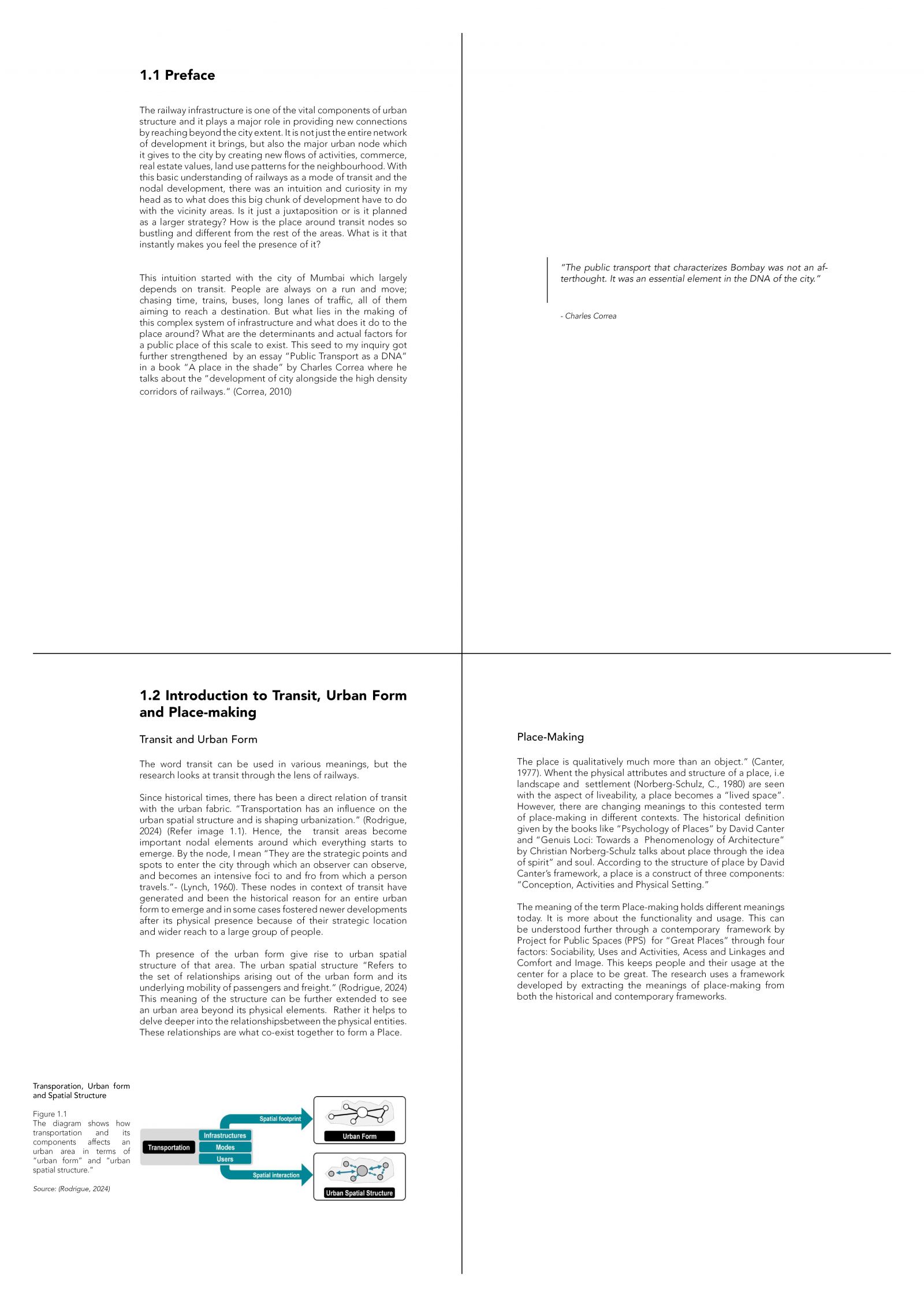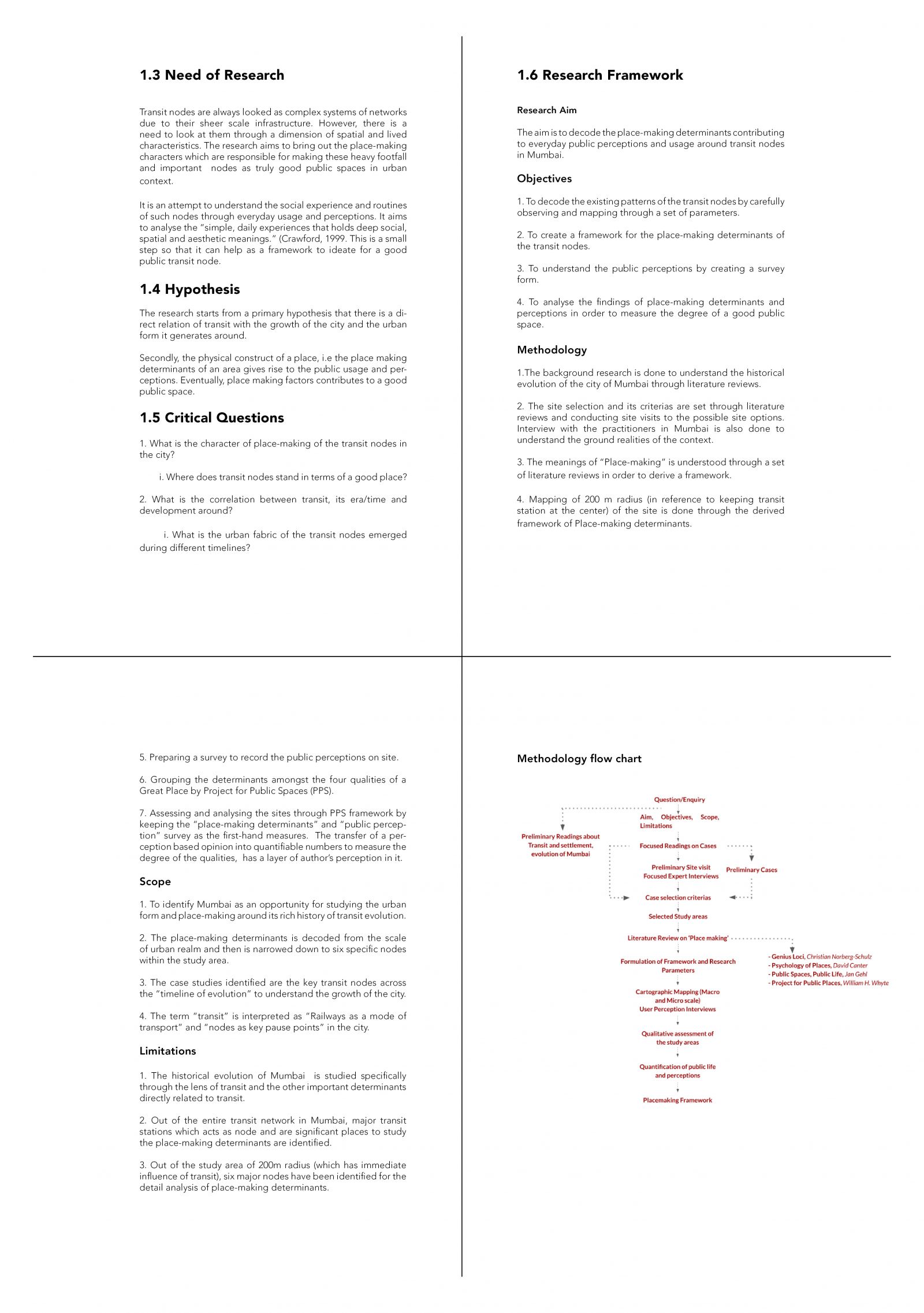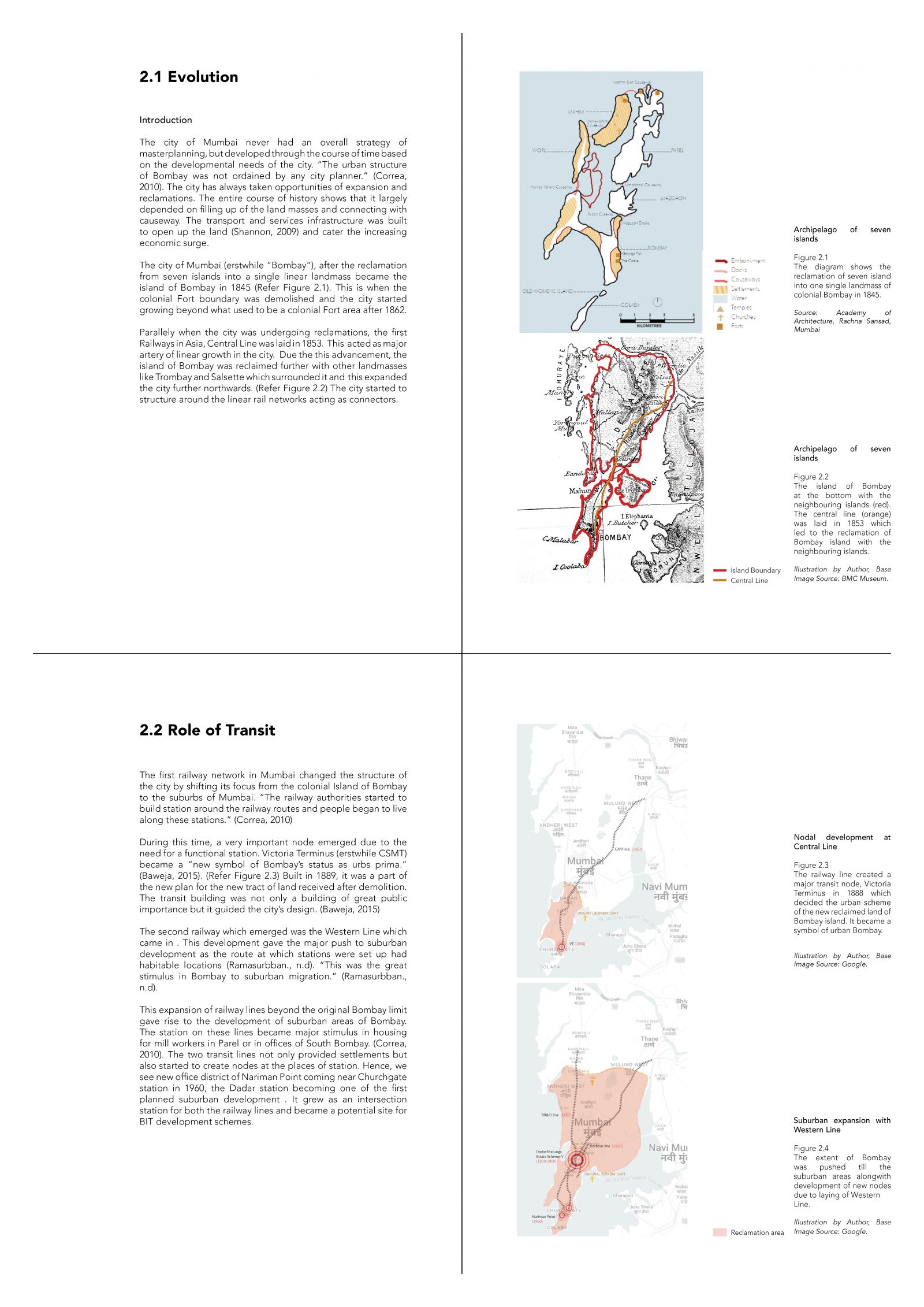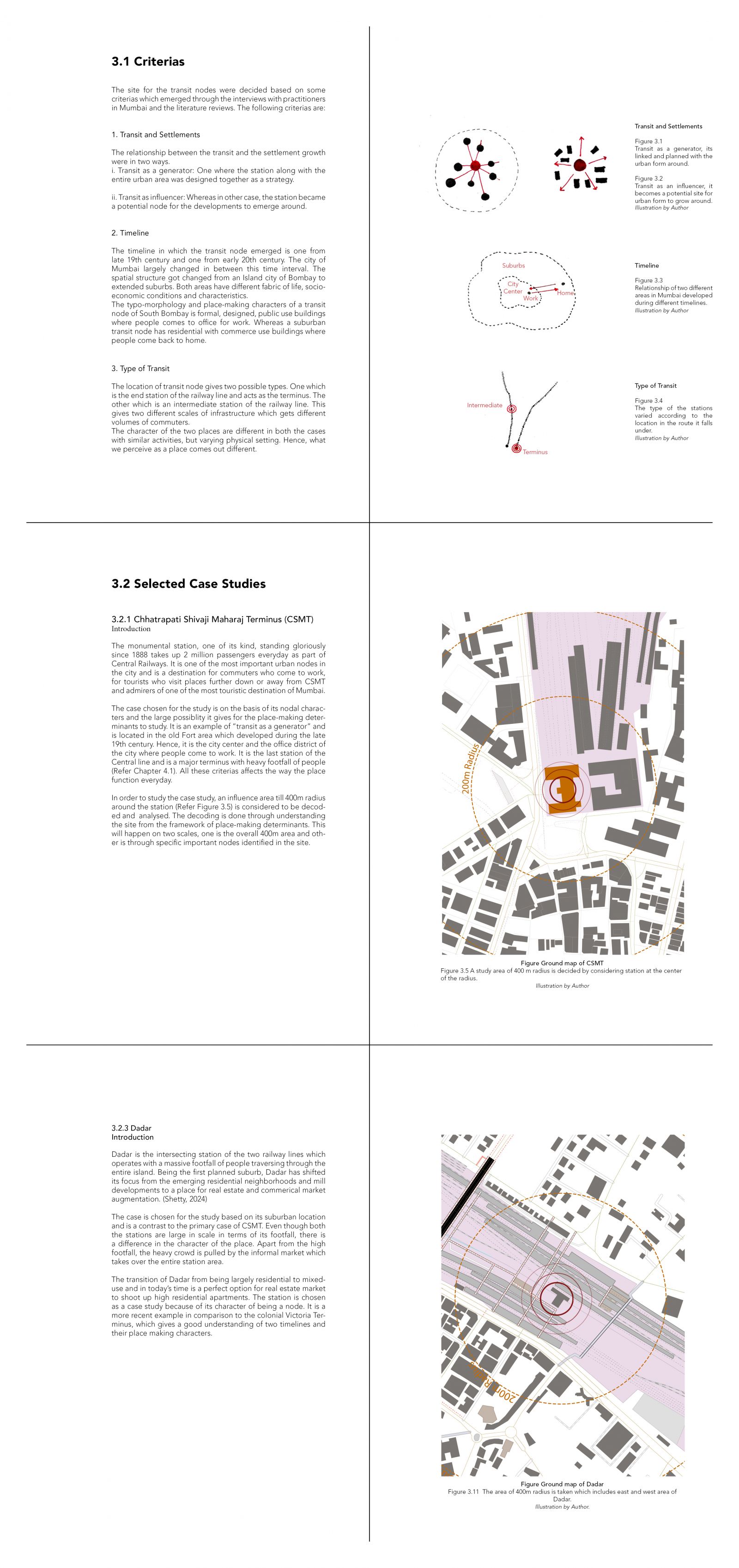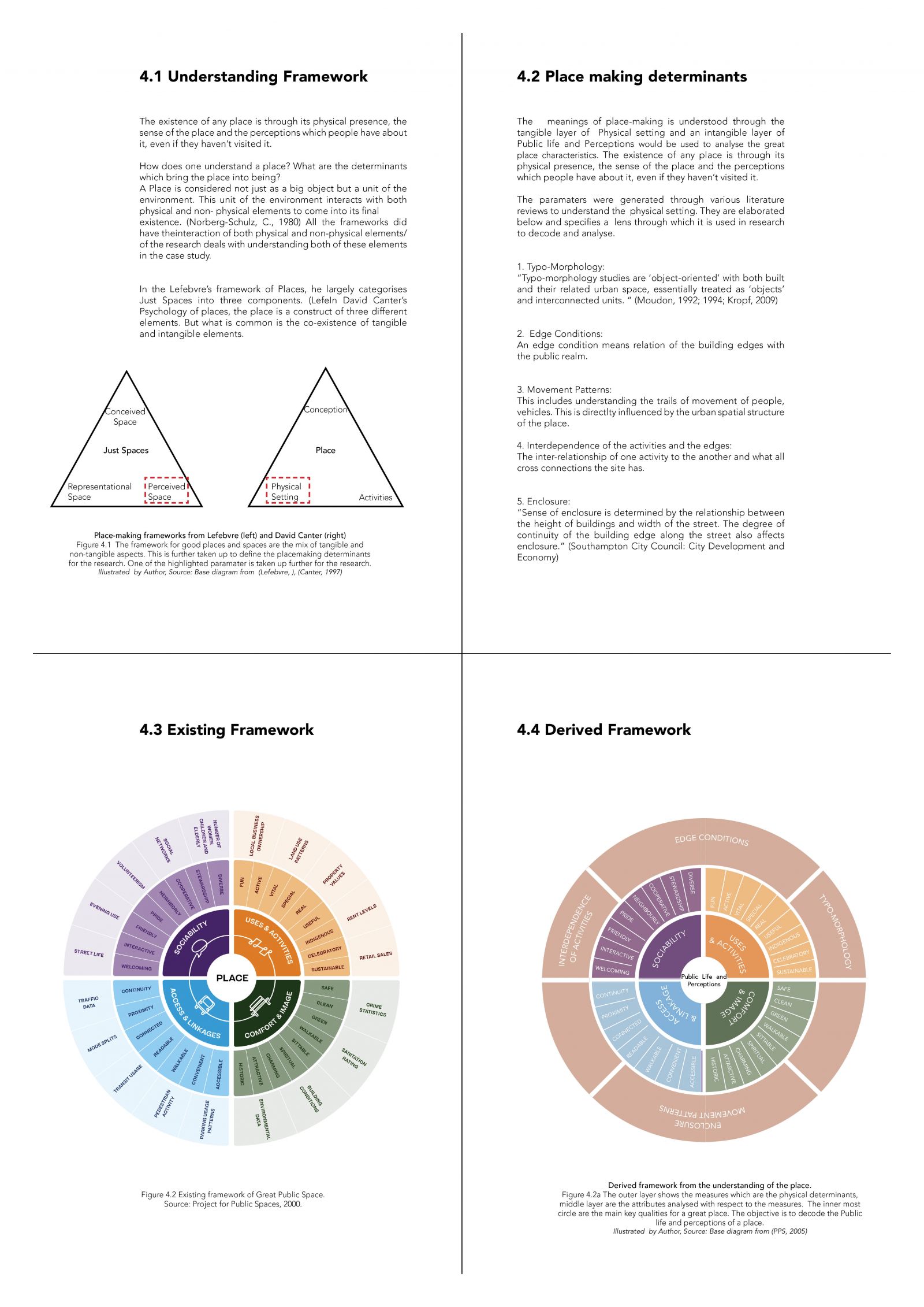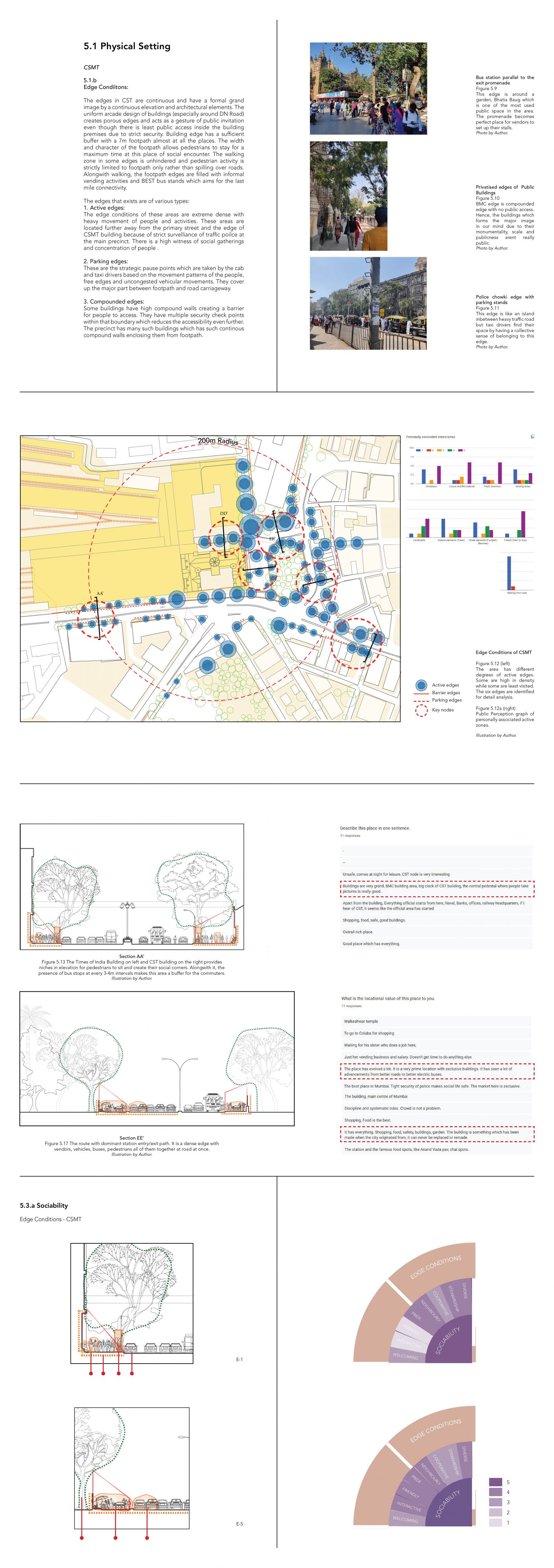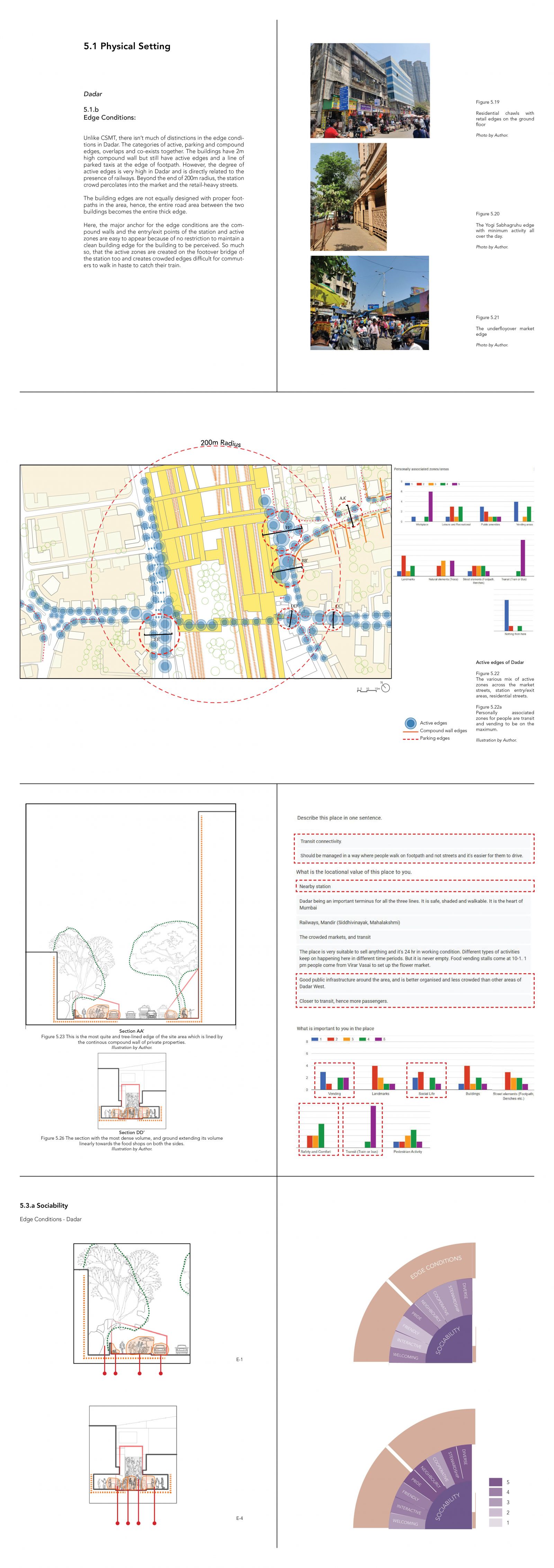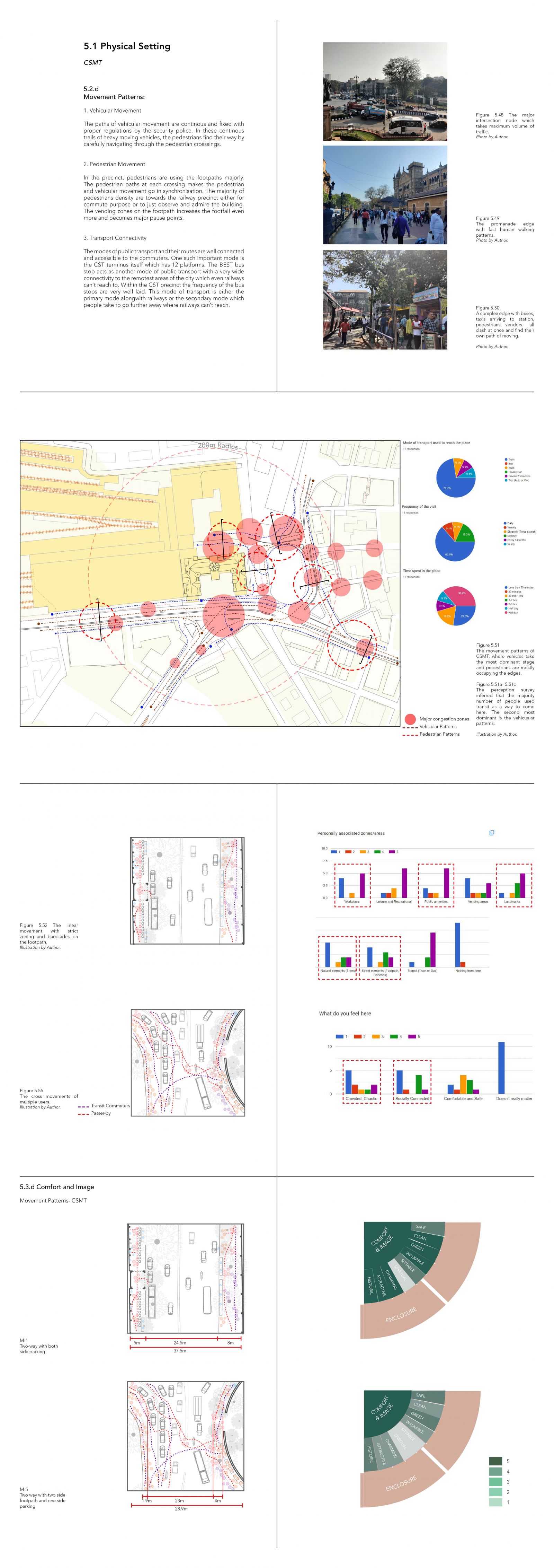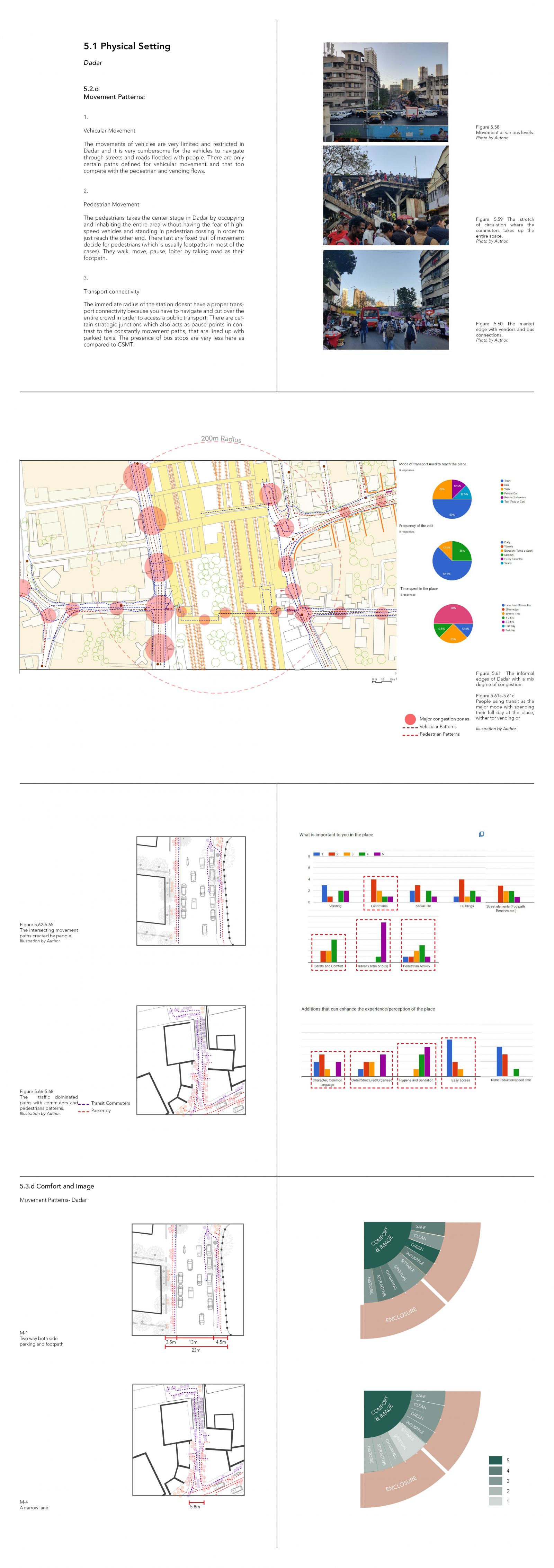Your browser is out-of-date!
For a richer surfing experience on our website, please update your browser. Update my browser now!
For a richer surfing experience on our website, please update your browser. Update my browser now!
The railways have been an integral element to country’s growth since colonial times and have emerged settlements around it. The cities expanded on the lines of the growth of transit network. Laid in the historical times, these railway lines continues to cater an increased density of population and much more complex networks in today’s time with very less modifications in their built characters.
The research aims to decode and understand such railway transit nodes which emerged in history and receives a major footfall in today’s times. Closely observing the city of Mumbai through the lens of transit, the research tries to bring out the spatial, public life and perceptions of the transit nodes through its place-making determinants. The understanding of the term “place-making” comes from using, both the historical and contemporary readings. This further gets linked to analyse the place-making determinants through Project for Public Spaces’s (PPS) “Great Places” framework in order to measure the public life and perceptions.
Generally, the spatial and place-making dimensions goes missing in the design of our railway stations and other major transit developments today. This body of work is an initial step in identifying the potential of our transit nodes as major urban nodes nd public spaces of our cities. It attempts to bring public usage and perceptions as the foremost elements for any good public space to function in the city.
Key Words:
Place-making, Transit Node, Physical Setting, Public Perceptions, Public Life.
